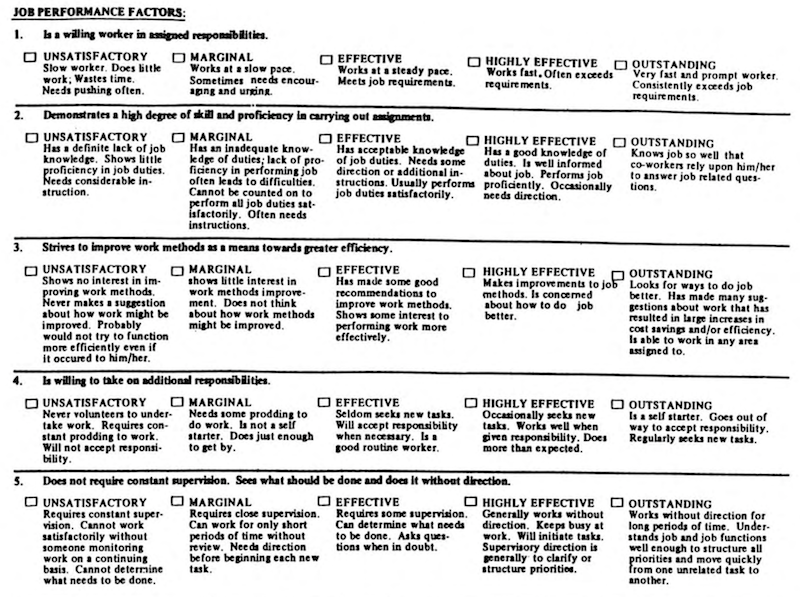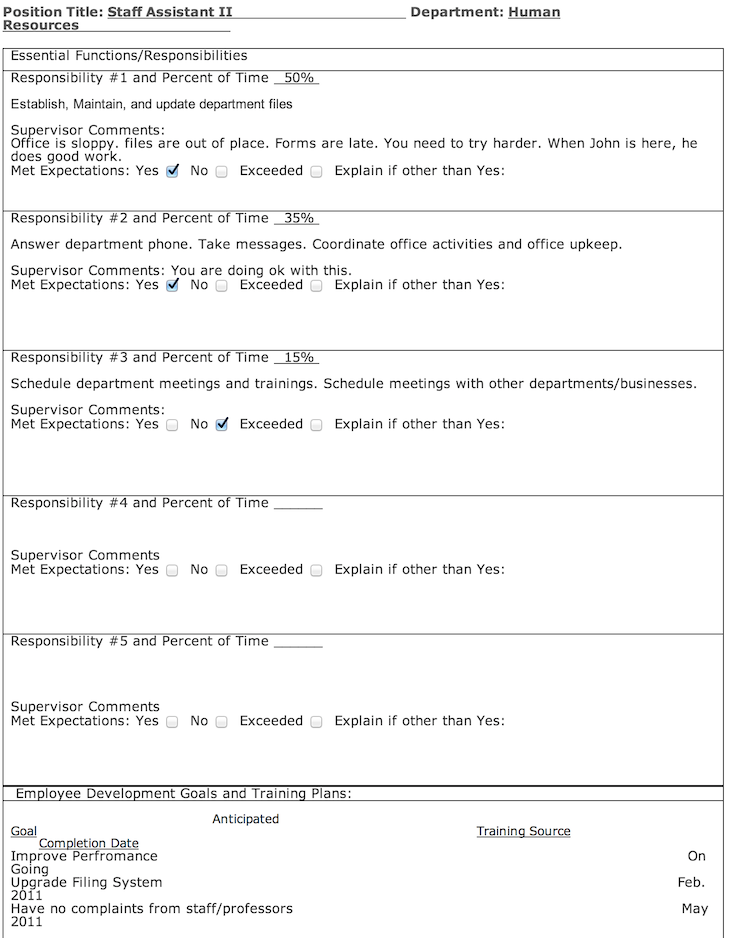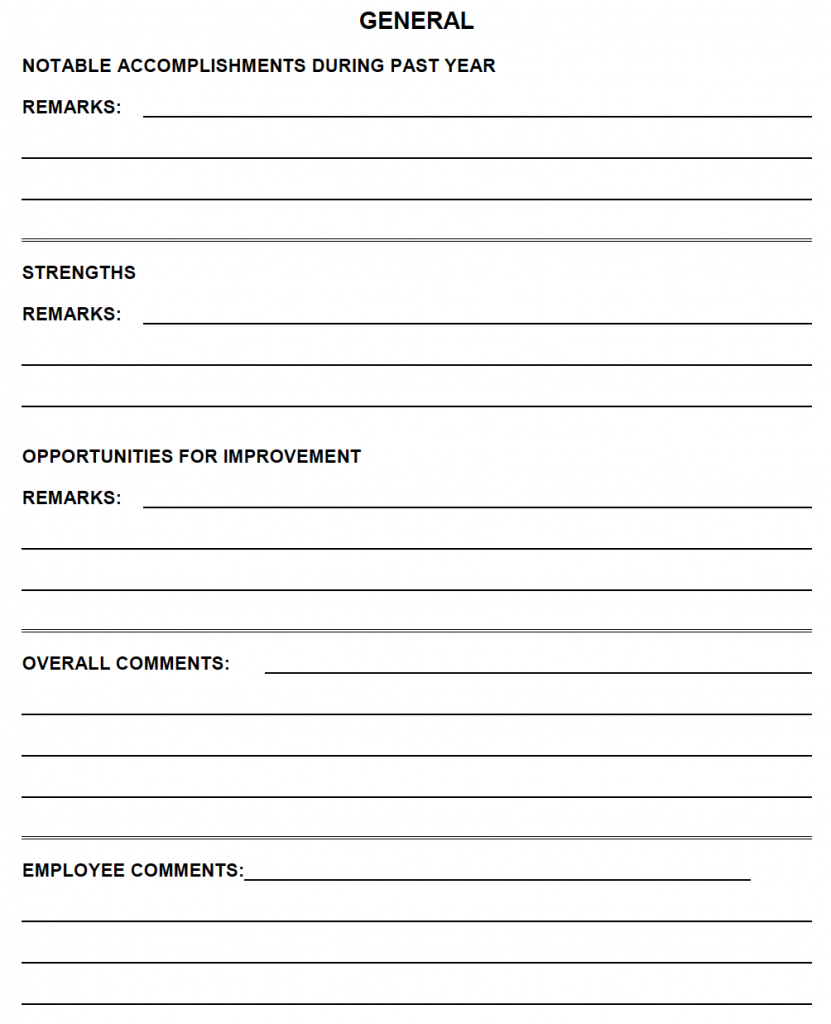Originally posted at http://www.appraisly.com/blog/performance-appraisal-forms-good-bad-ugly/
Let's assume that a given employee works at five companies over the span of their career. It's our bet that each of these five companies will use a different performance appraisal form. We've put together a quick list of the good, the bad and the downright ugly. We've seen them all! To keep you in suspense we've listed them in reverse order: the ugly, the bad and the good.
The Ugly
This example from a Hospital environment, and is still being used today.
Key points about this performance appraisal form:
- There are five questions with five rating possibilities. Not too bad – but where's the opportunity for the supervisor to provide his/her comments? This reads like a survey rather than a true appraisal.
- The wording on each option is very specific. This might work great in some situations, but is more than likely not applicable in the majority of cases. Does each adjective perfectly describe the employee? Unlikely.
- The form does not answer the two fundamental questions of performance appraisals – "What did I do well?" and "What can I do better?"
The Bad
Here's a great example from an HR department at a University.
Key points about this performance appraisal form:
- The goals are not specific, measurable or particularly relevant. There are no metrics or dates by which the supervisor can objectively evaluate his/her performance.
- In no way is the employees performance linked to what his business wants to achieve. Where is the balanced scorecard or business objectives (even as simple as Financial/Customer/Internal)?
- The evaluation itself is on a scale of 1-3 (no/yes/exceeded). This gives no room for a granular assessment. How does the employee know how he/she stacks up against peers?
The Good
This is a simple, generic example from one of the companies we worked with. Download the full version here.

Key points about this performance appraisal form:
- The above image is just a screenshot of Section III, but it addresses the most important parts of an appraisal form – where the employee performed well, and where he/she can improve. Download the full version.
- There are five earlier questions in the form which are generic enough to assess all employees, without alienating them.
- There is plenty of space for both the manager and the employee to comment on their performance. This allows the form to truly be used for it's intended purpose – aiding the performance conversation between both parties and keeping an accurate record of performance over time.
Do you have some good examples of performance appraisal forms? Get in touch in the comments below and we'll add them to the list.



